Research
Research Status:current
We use some essential cookies to make this website work.
We’d like to set additional cookies to understand how you use forestresearch.gov.uk, remember your settings and improve our services.
We also use cookies set by other sites to help us deliver content from their services.
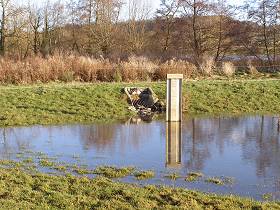
Example of a low-level bund
A large, low level bund is being built in the floodplain at Newtondale to create additional flood storage capacity (120,000 cubic metres). This will only operate during flood events and by storing water, help to lower the flood peak downstream. Care was taken in its design and management to ensure that neighbouring properties, transport links and archaeology will not be adversely affected.
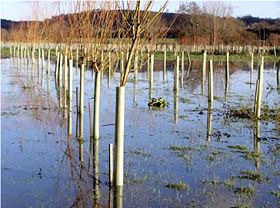
Newly planted riparian woodland
Riparian and floodplain woodland can form a barrier to flood flows, helping to slow the passage of the flood peak and potentially increase upstream flood storage. To date, 19 ha of riparian woodland have been planted within the Pickering Beck catchment and a further 10 ha within the River Seven catchment.

A typical large woody debris dam in a semi-natural woodland stream
Large woody debris (LWD) dams are a common feature in natural woodland streams but have been actively removed from most river systems in the UK due to concerns that they reduce fish movement and can be washed downstream, blocking bridges and culverts. However, these risks are increasingly thought to be outweighed by the ability of the dams to increase flood storage by raising water levels and reconnecting streams with their floodplain. The risk of washout can be reduced by limiting their formation to smaller watercourses (<5 m wide). A total of 129 LWD dams have been installed within the Pickering Beck catchment and a further 38 in the River Seven catchment.
Examples of large woody debris dams
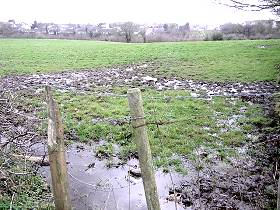
Farm soil plans identify land at risk of generating rapid runoff and plan appropriate measures
Woodland can help to protect sensitive soils from disturbance and reduce rapid runoff due to high infiltration rates. Opportunities exist in both catchments for small-scale, targeted planting to help intercept surface runoff from fields and slow down its passage to streams. 15 ha of farm woodland have been planted to date, all within the River Seven catchment.
Roof, yard and related works to reduce site runoff have also been undertaken on 10 farms between both catchments, as part of Catchment Sensitive Farming.
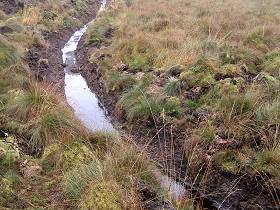
Drain blocking can help to re-wet peats and slow down runoff
187 heather bale check dams have been constructed within moorland drains and gullies in the Pickering Beck catchment to improve water retention and delay the generation of flood flows. In addition, 3.2 ha of heather habitat have been reseeded and 800 m of eroding footpaths repaired.
Heather burning has the potential to speed-up runoff by temporarily removing the vegetation cover and promoting hydrophobic soil conditions. 10 m wide no-burn buffer zones have been established along all main watercourses in the upper catchment of Pickering Beck as part of a 10-year Environmental Stewardship Scheme.
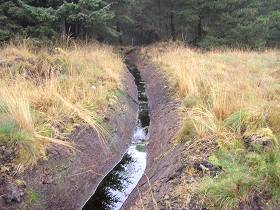
Redesigning forest drainage systems to restore streamside buffer zones can help to slow down runoff
When Cropton Forest was originally planted in the 1960s, forest drains were dug to improve soil conditions for tree growth. Drains led straight into streams and potentially increased the speed of runoff and the risk of erosion and siltation. As the forest is approaching harvesting age, there is an opportunity to correct these problems by redesigning the drainage systems and restoring streamside buffer zones. To date, 5.9 ha of riparian buffer have been restored, 3.3 ha (1,470 m of streamside) in the Pickering Beck catchment and 2.6 ha (1,309 m of streamside) in the River Seven catchment.
Cookies are files saved on your phone, tablet or computer when you visit a website.
We use cookies to store information about how you use the dwi.gov.uk website, such as the pages you visit.
Find out more about cookies on forestresearch.gov.uk
We use 3 types of cookie. You can choose which cookies you're happy for us to use.
These essential cookies do things like remember your progress through a form. They always need to be on.
We use Google Analytics to measure how you use the website so we can improve it based on user needs. Google Analytics sets cookies that store anonymised information about: how you got to the site the pages you visit on forestresearch.gov.uk and how long you spend on each page what you click on while you're visiting the site
Some forestresearch.gov.uk pages may contain content from other sites, like YouTube or Flickr, which may set their own cookies. These sites are sometimes called ‘third party’ services. This tells us how many people are seeing the content and whether it’s useful.